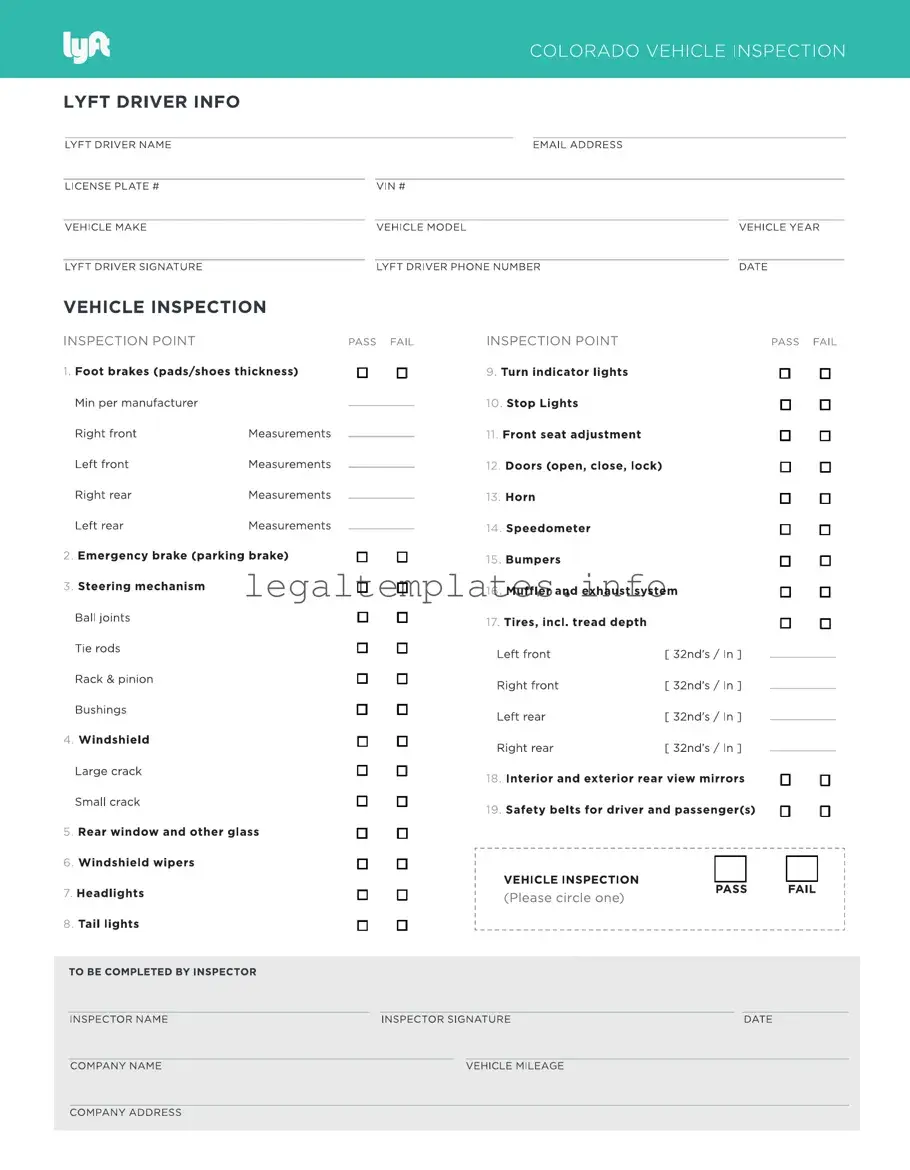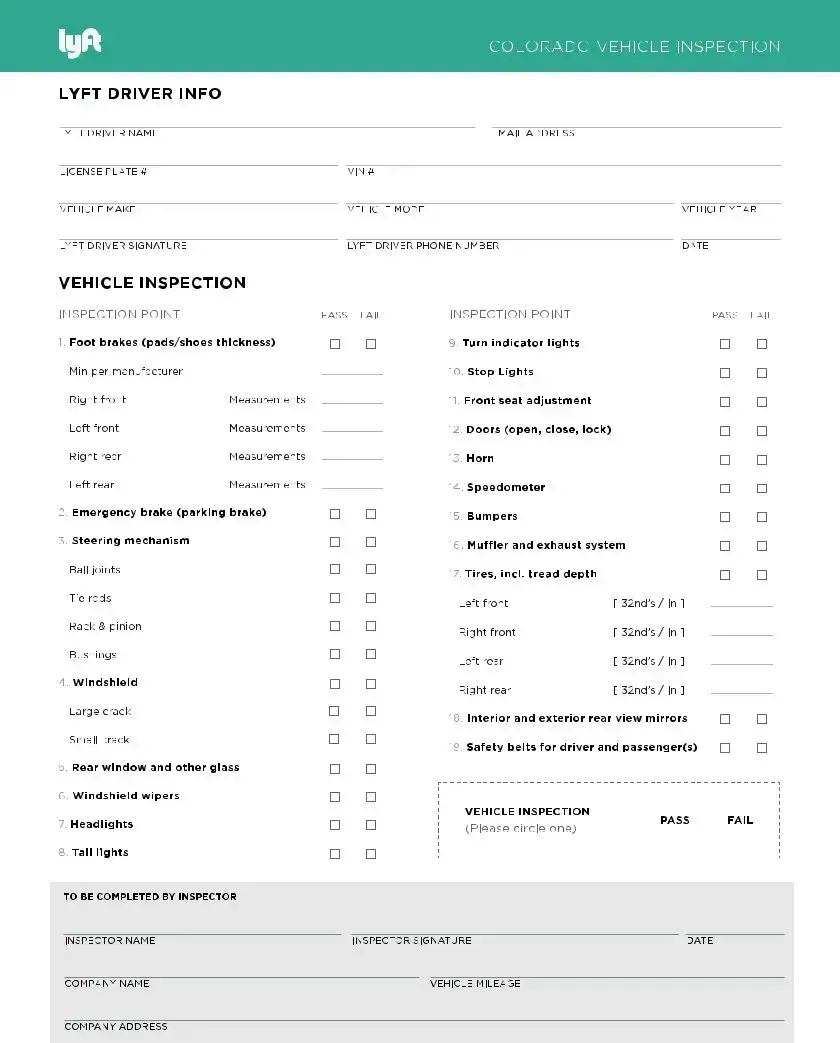Filling out the Lyft Inspection form is a crucial step for any driver looking to join or continue their partnership with Lyft. However, it's easy to encounter pitfalls that can delay or complicate the process. Here are ten common mistakes people make when completing the form that you should be aware of.
One of the most frequent oversights is not thoroughly checking the vehicle before the inspection. This might seem obvious, but ensuring your vehicle has no outstanding issues prior to the inspection can save time and prevent the frustration of failing due to minor, fixable problems. It's advised to do a personal check-up of your vehicle, or even better, a professional pre-inspection if possible.
A second mistake is providing incorrect vehicle information. Accurately entering your vehicle’s make, model, year, and VIN (Vehicle Identification Number) is essential. A simple typo can cause unnecessary delays, as the information on the form must match what’s registered with Lyft and your insurance policy.
Another common error is missing or skipping sections on the form. Every section of the Lyft Inspection form is important. Overlooking fields, especially those that seem trivial or irrelevant, can result in the need to redo the inspection or submit additional documentation, slowing down your approval process.
Drivers often forget to update their insurance information on the form. Liability insurance is a requirement for all rideshare drivers, and it's necessary to prove your coverage is current. Failing to update this information can lead to your inspection form being rejected, as Lyft needs to ensure they comply with state and local regulations.
Attempting to hide or not disclose previous damage or issues with the vehicle is a significant mistake. Honesty is crucial during the inspection process. Should any undisclosed issues be discovered later, it could lead to suspension or termination from the Lyft platform.
Some drivers mistakenly use outdated forms. Always check that you have the most current version of the Lyft Inspection form. Regulations and requirements can change, and using an outdated form could mean automatic rejection.
A crucial but often overlooked aspect is failing to have the form signed by a certified mechanic. The inspection must be completed by a professional who is qualified to assess whether your vehicle meets Lyft's safety standards.
Another pitfall is not keeping a copy of the inspection form for personal records. Should any disputes or questions arise, having your own copy can be invaluable for verifying information or dates.
Ignoring follow-up from Lyft regarding the inspection is a mistake that can halt your progress. If Lyft reaches out for more information or clarification, responding promptly ensures you remain in good standing and can continue driving without interruption.
Last but not least, underestimating the importance of the inspection form can lead to carelessness in filling it out. This document is a key step in ensuring the safety of both drivers and passengers, and treating it with the seriousness it deserves is paramount to a successful partnership with Lyft.
By being aware of these common mistakes and addressing them proactively, drivers can streamline their inspection process, ensuring a smoother journey towards driving with Lyft.

